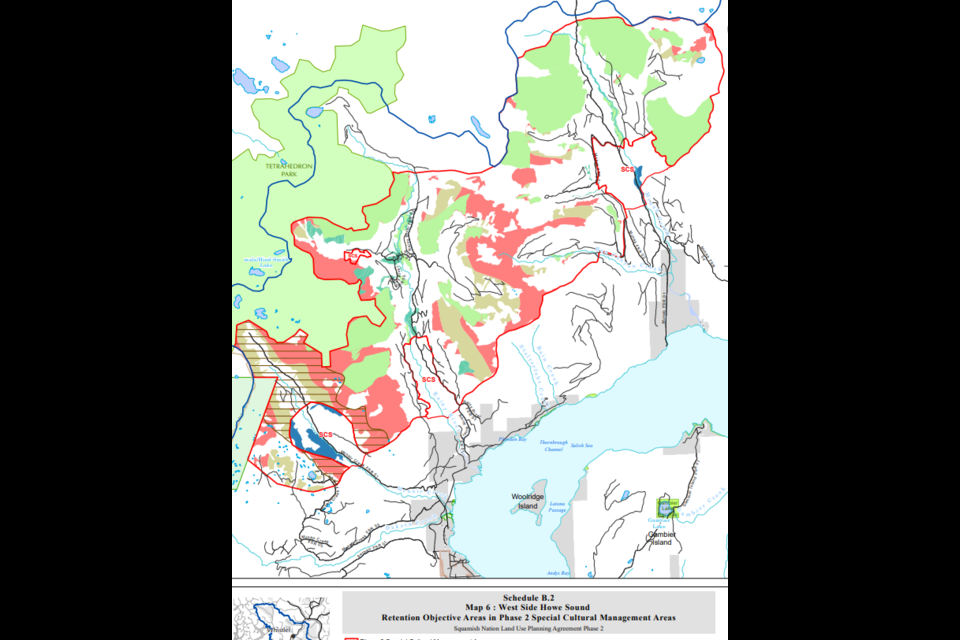A landmark agreement signed June 26 atop the Sea-to-Sky gondola will guide forest stewardship and cultural-site protection across Squamish Nation territory—including Átl’ạ́7tsem (Howe Sound). Among the locations within the Sunshine Coast Regional District, a significant portion of northeast Gambier Island has been designated for cultural preservation.
“This agreement is a major step forward in asserting our Nation’s role as stewards of our lands,” said Sxwíxwtn Wilson Williams, Councillor and elected spokesperson, Sḵwx̱wú7mesh Úxwumixw (Squamish Nation). “This will ensure our cultural sites and key environmental areas are protected for future generations.”
Under the Land Use Planning Agreement, 33 Siiyamin ta Sḵwx̱wú7mesh cultural sites are now formally recognized, including over 1,300 hectares on the northeast side of Gambier Island. These areas will be shielded from new roads, tenures, or harvesting, and will benefit from enhanced forest and cultural management.
The agreement also extends protections to seven culturally significant areas on the Sunshine Coast, including Upper Gibsons, McNab Creek, McNair Creek, Rainy River and Potlatch Creek. These sites — some of which are within the West Howe Sound region — are now recognized as Areas of Importance and will be managed under new cultural and ecological guidelines.
“Forestry is about people and the lands they call home, and by prioritizing these in our vision for forestry, we can build a future rooted in respect and reconciliation,” said Ravi Parmar, Minister of Forests. “By honouring Squamish Nation’s connection to the land and applying their values to forest management, we are charting a path forward that supports economic opportunity and environmental stewardship for our province.”
For residents and stewards of Gambier Island, the agreement brings stronger protections to riparian zones, fish-bearing streams, and culturally significant plant habitats within the designated Area of Interest.
It also outlines clearer engagement pathways for forestry operators working in local watersheds.
“Successful land-use planning includes building positive, lasting relationships and trust between First Nations and the B.C. government,” said Randene Neill, Minister of Water, Land and Resource Stewardship.
Next steps include drafting a ministerial order, with public and First Nations consultation, to set clear objectives for the forestry sector.
Jordan Copp is Coast Reporter’s civic and Indigenous affairs reporter. This reporting beat is made possible by the Local Journalism Initiative.
Words missing in article? Your adblocker might be preventing hyperlinked text from appearing.



